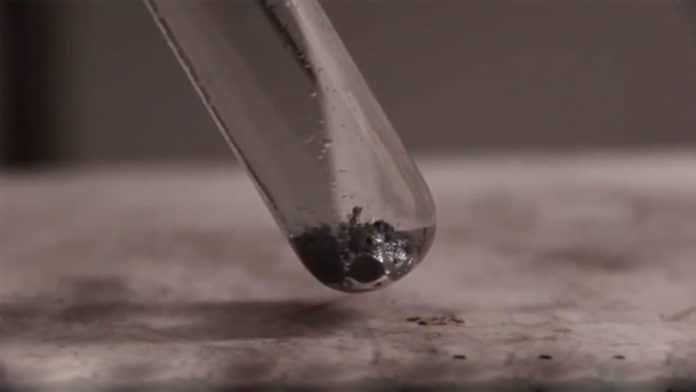Aluminum is a highly reactive metal that can strip oxygen from water molecules to generate hydrogen gas. Now, researchers at UC Santa Cruz have developed a new cost-effective and effective way to use aluminum’s reactivity to generate clean hydrogen fuel.
In a new study, a team of researchers shows that an easily produced composite of gallium and aluminum creates aluminum nanoparticles that react rapidly with water at room temperature to yield large amounts of hydrogen. According to researchers, the gallium was easily recovered for reuse after the reaction, which yields 90% of the hydrogen that could theoretically be produced from the reaction of all the aluminum in the composite.
“We don’t need any energy input, and it bubbles hydrogen-like crazy. I’ve never seen anything like it,” said UCSC Chemistry Professor Scott Oliver.
The reaction of aluminum and gallium with water works because gallium removes the passive aluminum oxide coating, allowing direct contact of aluminum with water.
Using scanning electron microscopy and x-ray diffraction, the researchers showed the formation of aluminum nanoparticles in a 3:1 gallium-aluminum composite, which they found to be the optimal ratio for hydrogen production. In this gallium-rich composite, the gallium serves both to dissolve the aluminum oxide coating and to separate the aluminum into nanoparticles.
“The gallium separates the nanoparticles and keeps them from aggregating into larger particles,” said Bakthan Singaram, corresponding author of a paper on the new findings. “People have struggled to make aluminum nanoparticles, and here we are producing them under normal atmospheric pressure and room temperature conditions.”
The researchers say the composite for their method can be made with readily available sources of aluminum, including used foil or cans. The composite can be easily stored for long periods by covering it with cyclohexane to protect it from moisture.
While gallium is not abundant and is relatively expensive, it can be recovered and reused multiple times without losing effectiveness. However, it remains to be seen if this process can be scaled up to be practical for commercial hydrogen production.
